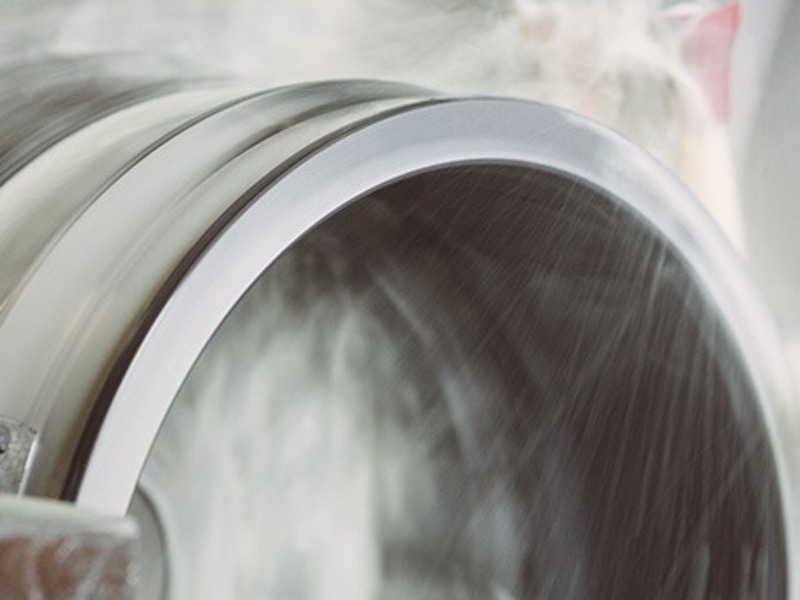One of the most common elements of any pretreatment system is an alkaline cleaner.
 Max GeorgeThese cleaners remove organic soils from the surface of your parts and prepare them for the selected pretreatment process. With so many different options of cleaners available, what can make up an alkaline cleaner, and how can these components help or hurt your process?
Max GeorgeThese cleaners remove organic soils from the surface of your parts and prepare them for the selected pretreatment process. With so many different options of cleaners available, what can make up an alkaline cleaner, and how can these components help or hurt your process?
The Essentials
The backbone of an alkaline cleaner is a source of alkalinity. The reason to have the cleaners have alkalinity is that it helps cut through fats, oils, and greases by saponifying them into soluble soaps. Two of the most common alkalinity sources are sodium hydroxide and potassium hydroxide. These hydroxides are highly alkaline and economical but are not always safe on softer metals like aluminum and zinc. If softer metals need to be cleaned, carbonates, silicates, phosphates, or amines can be used as alkalinity sources.
The next component in almost all cleaners is a surfactant. These surfactants are important to the cleaning process because they lower the surface tension of the cleaner, allowing it to wet out on the surface of the part while also being capable of forming micelles, trapping and suspending oil in an emulsion. The two main categories used in alkaline cleaners are anionic and non-ionic surfactants which work together to help remove dirt, particulates, oils, and grease to prepare the surface for the next step in the process.
The Situationally Based
In many cases, alkaline cleaners contain water-soluble or emulsified solvents that aid in cleaning. Solvents break down soils into smaller particles and put them in solution, not allowing them to redeposit on the surface. While it may seem like all cleaners should have solvents based on their efficacy, many solvents can contribute to VOCs in a manufacturing facility which could be a concern. Also, some of these solvents can have negative health effects on employees, and this needs to be considered before implementing a solventized cleaner
Silicates can often be found in industrial alkaline cleaners. The main advantage of having silicates in a cleaner is that they, like surfactants, can help the cleaner wet out on the surface of the metal and help disperse oil and greases. Silicates also have some corrosion-inhibiting properties, enabling products with sodium or potassium hydroxide to be safer for cleaning aluminum. There are two potential issues with using a silicate cleaner. One issue is that these products can sometimes leave a film on the surface of the part, which can cause paint adhesion issues down the line. The other issue is that silicate can form a film in a washer that can clog nozzles and build around heating coils, which can affect its efficacy.
Phosphates have been used in cleaners for many years but have been becoming less and less appealing due to the environmental impact caused by their presence in waste streams. They have been used as cleaners and continue to be used due to their ability to help clean the parts while also preventing scum and deposits caused by hard water. Many municipalities have been more aggressive in phosphate discharge limits, so while they are beneficial to cleaning performance, where you are trying to clean is important.
In many cleaning baths, free-floating metal ions can be an issue in hard water or from the cleaner attacking the metal surface. These ions can form films or redeposit on the surface of the metal, causing issues down the road. Chelants such as citric acid and EDTA can be added to cleaners to help tie up these ions and prevent any issues they may cause. While this is beneficial, some of the metal ions that are tied up cannot be placed in the waste steam, so they can cause wastewater issues when disposing of the cleaner after it is spent. It is best to consult with your EHS team to see if chelators can be used.
Rust Preventive Package
A final component that is commonly included in a cleaner is a rust preventive package. These generally consist of either a blend of amines or a nitrite-based component. These components are added to prevent flash rusting inside of a washer or if there is a large gap in time between cleaning and the next step of the process. They can also contribute to the total alkalinity of the product, which benefits the overall cleaning of the parts. These materials can be a concern to EHS departments. Nitrite-containing cleaners have the potential to form carcinogenic nitrosamines when cleaning some amine-containing metalworking fluids. Amines also can pose a risk to employees through inhalation and skin contact.
In the world of industrial cleaning, there are many builds and many options for how to get the job done. Working with your chemical sales representative, production team, and EHS group can give you the best chance to select an economical, effective, and safe cleaner for your facility.
Max George is Senior Product Manager at DuBois Chemicals. Visit http://www.duboischemicals.com/



































